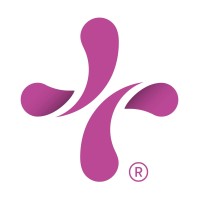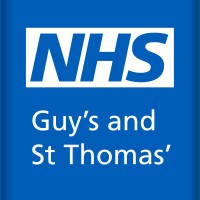
CommonSpirit Health Company Cyber Security Posture
commonspirit.careersTwo legacies of caring. One ministry of change. CommonSpirit Health is a non-profit, Catholic health system dedicated to advancing health for all people. With approximately 175,000 employees and 25,000 physicians and advanced practice clinicians, CommonSpirit operates 140 hospitals and more than 2,200 care centers serving sites across 24 states. Our commitment to serving the common good is delivered through the dedicated work of thousands of physicians, advanced practice clinicians, nurses, and staff; through clinical excellence delivered across a system of hospitals and other care centers, and accessible to nearly one in four U.S. residents; and through more than $4 billion annually in charity care, community benefits, and government program services. The CommonSpirit name was inspired by scripture: "Now to each one the manifestation of the Spirit is given for the common good." Those words motivate and guide us every day. They celebrate the healing gift of compassion that God gives to us all, and they remind us of our calling to serve the common good. Learn more at commonspirit.org.
CommonSpirit Health Company Details
commonspirithealth
32542 employees
62634
62
Hospitals and Health Care
commonspirit.careers
Scan still pending
COM_4874380
In-progress
Between 800 and 900
This score is AI-generated and less favored by cyber insurers, who prefer the TPRM score.
 CommonSpirit Health Global Score
CommonSpirit Health Global Score.png)

CommonSpirit Health Company Scoring based on AI Models
| Model Name | Date | Description | Current Score Difference | Score |
|---|---|---|---|---|
| AVERAGE-Industry | 03-12-2025 | This score represents the average cybersecurity rating of companies already scanned within the same industry. It provides a benchmark to compare an individual company's security posture against its industry peers. | N/A | Between 800 and 900 |
CommonSpirit Health Company Cyber Security News & History
| Entity | Type | Severity | Impact | Seen | Url ID | Details | View |
|---|---|---|---|---|---|---|---|
| Dignity Health | Breach | 85 | 4 | 08/2016 | DIG15131522 | Link | |
Rankiteo Explanation : Attack with significant impact with customers data leaksDescription: Dominican Hospital, part of Dignity Health, accedentially suffered from a data breach incident in August 2016. The attack compromised the name, account number, admission date, length of stay, total charges, unit they were seen in, room number they were seen in, and insurance carrier name. The health plan that received the transmission has been cooperating with the hospital and expected to provide an attestation that the errant data was destroyed. Dominican Hospital took action and provided traning sessions to their staff and took disciplinary action. | |||||||
| CommonSpirit Health | Breach | 100 | 4 | 01/2023 | COM205827123 | Link | |
Rankiteo Explanation : Attack with significant impact with customers data leaksDescription: CommonSpirit Health is now facing a class action lawsuit because of the cyberattacks that it faced in 2022. The lawsuit was initiated because the attacks impacted facilities across one of the largest nonprofit healthcare systems in the US. Back in the last year, CommonSpirit began reporting IT outages, EHR downtime, and appointment cancellations in early October, later confirming that these disruptions were caused by attacks. The latest lawsuit alleges that CommonSpirit lost control of highly sensitive information as a result of the breach and suggested that the health system has not been forthcoming about the breach. It was also alleged that the number of actual victims of the Data Breach may be much higher to approx twenty million individuals. The plaintiffs are seeking reimbursement for out-of-pocket costs, credit monitoring services, and improvements to CommonSpirit’s data security systems. | |||||||
| CHI Health | Cyber Attack | 100 | 6 | 10/2022 | CHI234511122 | Link | |
Rankiteo Explanation : Attack threatening the economy of a geographical regionDescription: CHI Health locations in Omaha suffered an IT security incident that affected its electronic health records and other systems. CHI had to take some information technology systems offline as a precautionary measure. | |||||||
| CommonSpirit Health | Cyber Attack | 100 | 7 | 10/2022 | COM01921122 | Link | |
Rankiteo Explanation : Attack that could injure or kill peopleDescription: CommonSpirit, the second-largest nonprofit hospital chain in the U.S., suffered a cybersecurity incident that disrupted medical services across the country. The attack caused certain IT systems including electronic health records and other systems to go offline which resulted in rescheduling some patient appointments. | |||||||
| CHI | Data Leak | 85 | 3 | 02/2019 | CHI25116223 | Link | |
Rankiteo Explanation : Attack with significant impact with internal employee data leaksDescription: CHI Health locations in Omaha experienced an IT security incident that affected electronic health records and other systems of the organization. After that, some information technology systems have been taken offline as a precautionary measure for the organization notified. All CHI Health facilities in Omaha including Lakeside Hospital, Creighton University Medical Center-Bergan Mercy, and Immanuel Medical Center have been impacted. The organization also stated that their facilities are following existing protocols for system outages and taking steps to minimize the disruption. | |||||||
| St. Luke's Health | Ransomware | 100 | 6 | 10/2022 | STL235161022 | Link | |
Rankiteo Explanation : Attack threatening the economy of a geographical regionDescription: The parent company of St. Luke's was the victim of a ransomware attack that affected the company's facilities in 22 states. Vital digital records have been replaced by slow, unfamiliar, and occasionally incomplete paper records as a result of the ransomware attack, which has caused a "internal calamity." CommonSpirit Health stated, "We are taking steps to alleviate the disruption and maintain continuity of service. Patient care is our first concern. We apologise for any inconvenience. | |||||||
| CommonSpirit Health | Ransomware | 100 | 6 | 10/2022 | COM23211022 | Link | |
Rankiteo Explanation : Attack threatening the economy of a geographical regionDescription: One of the largest nonprofit healthcare systems in the U.S., CommonSpirit targeted by a ransomware attack that caused widespread IT outages at hospitals across the country. This attack impacted several electronic health record systems across the country. They investigated the incident and hired cybersecurity specialists to deal with the response and contain the incident. | |||||||
CommonSpirit Health Company Subsidiaries

Two legacies of caring. One ministry of change. CommonSpirit Health is a non-profit, Catholic health system dedicated to advancing health for all people. With approximately 175,000 employees and 25,000 physicians and advanced practice clinicians, CommonSpirit operates 140 hospitals and more than 2,200 care centers serving sites across 24 states. Our commitment to serving the common good is delivered through the dedicated work of thousands of physicians, advanced practice clinicians, nurses, and staff; through clinical excellence delivered across a system of hospitals and other care centers, and accessible to nearly one in four U.S. residents; and through more than $4 billion annually in charity care, community benefits, and government program services. The CommonSpirit name was inspired by scripture: "Now to each one the manifestation of the Spirit is given for the common good." Those words motivate and guide us every day. They celebrate the healing gift of compassion that God gives to us all, and they remind us of our calling to serve the common good. Learn more at commonspirit.org.
Access Data Using Our API

Get company history
.png)
CommonSpirit Health Cyber Security News
CommonSpirit Health Increases Ransomware Attack Cost Estimate to $160 Million
The Chicago, IL-based Catholic health system, CommonSpirit Health, has reported an operating loss of $1.4 billion for fiscal year 2023, ...
Novant hires cyber exec from CommonSpirit
Sanjeev Sah will take on the chief information security officer role at the North Carolina-based health system after more than three years ...
CommonSpirit Health reports that ransomware attack cost $160 million | Cyber Security Hub
The healthcare company suffered the attack, which exposed the personal data of more than 623700 patients, in December 2022.
CommonSpirit Health revealed that cybersecurity breach was much larger than initially thought, reaching 100 facilities in 13 states
CommonSpirit Health reported last year a ransomware attack that compromised the protected health information of more than 623700 people.
CommonSpirit ransomware attack exposed personal information of 623K people, system says
CommonSpirit Health has told regulators that the protected health information of more than 623,700 people was comprised in a ransomware attack ...
Cybersecurity expert Sanjeev Sah named chief information security officer at Novant Health
WINSTON-SALEM, N.C. (June 24, 2024) – Novant Health welcomes Sanjeev Sah as its chief information security officer (CISO).
CommonSpirit Health system experiences IT security incident
NEW YORK – On May 29, 2023, Mountain View Hospital and its partner clinics in Idaho Falls were hit by a cyber attack, affecting critical ...
CommonSpirit reports $160 million loss from last year’s ransomware attack
A 2022 ransomware attack on CommonSpirit Health cost the health system around $160 million in lost revenue and remediation costs, ...
CrowdStrike outage hits US hospitals
CrowdStrike, a growing cybersecurity firm, unwittingly triggered a massive IT outage on Friday, disrupting businesses, including healthcare, ...

CommonSpirit Health Similar Companies

Baptist Health
Baptist Health South Florida is the largest healthcare organization in the region, with 12 hospitals, more than 28,000 employees, 4,500 physicians and 200 outpatient centers, urgent care facilities and physician practices spanning Miami-Dade, Monroe, Broward and Palm Beach counties. Baptist Health S

St. Luke's University Health Network
Founded in 1872, St. Luke’s University Health Network (SLUHN) is a fully integrated, regional, non-profit network of more than 20,000 employees providing services at 15 campuses and 300+ outpatient sites. With annual net revenue of $3.4 billion, the Network’s service area includes 11 counties in tw

Guy's and St Thomas' NHS Foundation Trust
One of the largest Trusts in the UK, Guy’s and St Thomas’ NHS Foundation Trust comprises five of the UK’s best known hospitals – Guy’s, St Thomas’, Evelina London Children’s Hospital, Royal Brompton and Harefield – as well as community services in Lambeth and Southwark, all with a long history of hi

Memorial Hermann Health System
Advancing Health. Personalizing Care. Memorial Hermann Health System is a nonprofit, values-driven, community-owned health system dedicated to improving health. A fully integrated health system with more than 260 care delivery sites throughout the Greater Houston area, Memorial Hermann is committe

Adventist Health
Adventist Health is a faith-inspired, nonprofit integrated health system serving more than 100 communities on the West Coast and Hawaii with over 440 sites of care. Founded on Adventist heritage and values, Adventist Health provides care in hospitals, clinics, home care agencies, hospice agencies, a

Labcorp
Clear and confident health care decisions begin with questions. At Labcorp, we’re constantly in pursuit of answers. As a global leader of innovative and comprehensive laboratory services, we help doctors, hospitals, pharmaceutical companies, researchers and patients make clear and confident decisi

Frequently Asked Questions (FAQ) on Cybersecurity Incidents
CommonSpirit Health CyberSecurity History Information
Total Incidents: According to Rankiteo, CommonSpirit Health has faced 7 incidents in the past.
Incident Types: The types of cybersecurity incidents that have occurred include ['Cyber Attack', 'Ransomware', 'Breach', 'Data Leak'].
Total Financial Loss: The total financial loss from these incidents is estimated to be {total_financial_loss}.
Cybersecurity Posture: The company's overall cybersecurity posture is described as Two legacies of caring. One ministry of change. CommonSpirit Health is a non-profit, Catholic health system dedicated to advancing health for all people. With approximately 175,000 employees and 25,000 physicians and advanced practice clinicians, CommonSpirit operates 140 hospitals and more than 2,200 care centers serving sites across 24 states. Our commitment to serving the common good is delivered through the dedicated work of thousands of physicians, advanced practice clinicians, nurses, and staff; through clinical excellence delivered across a system of hospitals and other care centers, and accessible to nearly one in four U.S. residents; and through more than $4 billion annually in charity care, community benefits, and government program services. The CommonSpirit name was inspired by scripture: "Now to each one the manifestation of the Spirit is given for the common good." Those words motivate and guide us every day. They celebrate the healing gift of compassion that God gives to us all, and they remind us of our calling to serve the common good. Learn more at commonspirit.org..
Detection and Response: The company detects and responds to cybersecurity incidents through {description_of_detection_and_response_process}.
Incident Details
Incident 1: Ransomware Attack
Title: {Incident_Title}
Description: {Brief_description_of_the_incident}
Date Detected: {Detection_Date}
Date Publicly Disclosed: {Disclosure_Date}
Date Resolved: {Resolution_Date}
Type: {Type_of_Attack}
Attack Vector: {Attack_Vector}
Vulnerability Exploited: {Vulnerability}
Threat Actor: {Threat_Actor}
Motivation: {Motivation}
Incident 2: Data Breach
Title: {Incident_Title}
Description: {Brief_description_of_the_incident}
Date Detected: {Detection_Date}
Date Publicly Disclosed: {Disclosure_Date}
Date Resolved: {Resolution_Date}
Type: {Type_of_Attack}
Attack Vector: {Attack_Vector}
Vulnerability Exploited: {Vulnerability}
Threat Actor: {Threat_Actor}
Motivation: {Motivation}
Common Attack Types: The most common types of attacks the company has faced are ['Breach', 'Cyber Attack', 'Ransomware'].
Identification of Attack Vectors: The company identifies the attack vectors used in incidents through {description_of_identification_process}.
Impact of the Incidents
Incident 1: Ransomware Attack
Financial Loss: {Financial_Loss}
Data Compromised: {Data_Compromised}
Systems Affected: {Systems_Affected}
Downtime: {Downtime}
Operational Impact: {Operational_Impact}
Conversion Rate Impact: {Conversion_Rate_Impact}
Revenue Loss: {Revenue_Loss}
Customer Complaints: {Customer_Complaints}
Brand Reputation Impact: {Brand_Reputation_Impact}
Legal Liabilities: {Legal_Liabilities}
Identity Theft Risk: {Identity_Theft_Risk}
Payment Information Risk: {Payment_Information_Risk}
Incident 2: Data Breach
Financial Loss: {Financial_Loss}
Data Compromised: {Data_Compromised}
Systems Affected: {Systems_Affected}
Downtime: {Downtime}
Operational Impact: {Operational_Impact}
Conversion Rate Impact: {Conversion_Rate_Impact}
Revenue Loss: {Revenue_Loss}
Customer Complaints: {Customer_Complaints}
Brand Reputation Impact: {Brand_Reputation_Impact}
Legal Liabilities: {Legal_Liabilities}
Identity Theft Risk: {Identity_Theft_Risk}
Payment Information Risk: {Payment_Information_Risk}
Average Financial Loss: The average financial loss per incident is {average_financial_loss}.
Commonly Compromised Data Types: The types of data most commonly compromised in incidents are {list_of_commonly_compromised_data_types}.
Incident 1: Ransomware Attack
Entity Name: {Entity_Name}
Entity Type: {Entity_Type}
Industry: {Industry}
Location: {Location}
Size: {Size}
Customers Affected: {Customers_Affected}
Incident 2: Data Breach
Entity Name: {Entity_Name}
Entity Type: {Entity_Type}
Industry: {Industry}
Location: {Location}
Size: {Size}
Customers Affected: {Customers_Affected}
Response to the Incidents
Incident 1: Ransomware Attack
Incident Response Plan Activated: {Yes/No}
Third Party Assistance: {Yes/No}
Law Enforcement Notified: {Yes/No}
Containment Measures: {Containment_Measures}
Remediation Measures: {Remediation_Measures}
Recovery Measures: {Recovery_Measures}
Communication Strategy: {Communication_Strategy}
Adaptive Behavioral WAF: {Adaptive_Behavioral_WAF}
On-Demand Scrubbing Services: {On_Demand_Scrubbing_Services}
Network Segmentation: {Network_Segmentation}
Enhanced Monitoring: {Enhanced_Monitoring}
Incident 2: Data Breach
Incident Response Plan Activated: {Yes/No}
Third Party Assistance: {Yes/No}
Law Enforcement Notified: {Yes/No}
Containment Measures: {Containment_Measures}
Remediation Measures: {Remediation_Measures}
Recovery Measures: {Recovery_Measures}
Communication Strategy: {Communication_Strategy}
Adaptive Behavioral WAF: {Adaptive_Behavioral_WAF}
On-Demand Scrubbing Services: {On_Demand_Scrubbing_Services}
Network Segmentation: {Network_Segmentation}
Enhanced Monitoring: {Enhanced_Monitoring}
Incident Response Plan: The company's incident response plan is described as {description_of_incident_response_plan}.
Third-Party Assistance: The company involves third-party assistance in incident response through {description_of_third_party_involvement}.
Data Breach Information
Incident 2: Data Breach
Type of Data Compromised: {Type_of_Data}
Number of Records Exposed: {Number_of_Records}
Sensitivity of Data: {Sensitivity_of_Data}
Data Exfiltration: {Yes/No}
Data Encryption: {Yes/No}
File Types Exposed: {File_Types}
Personally Identifiable Information: {Yes/No}
Prevention of Data Exfiltration: The company takes the following measures to prevent data exfiltration: {description_of_prevention_measures}.
Handling of PII Incidents: The company handles incidents involving personally identifiable information (PII) through {description_of_handling_process}.
Ransomware Information
Incident 1: Ransomware Attack
Ransom Demanded: {Ransom_Amount}
Ransom Paid: {Ransom_Paid}
Ransomware Strain: {Ransomware_Strain}
Data Encryption: {Yes/No}
Data Exfiltration: {Yes/No}
Ransom Payment Policy: The company's policy on paying ransoms in ransomware incidents is described as {description_of_ransom_payment_policy}.
Data Recovery from Ransomware: The company recovers data encrypted by ransomware through {description_of_data_recovery_process}.
Regulatory Compliance
Incident 1: Ransomware Attack
Regulations Violated: {Regulations_Violated}
Fines Imposed: {Fines_Imposed}
Legal Actions: {Legal_Actions}
Regulatory Notifications: {Regulatory_Notifications}
Incident 2: Data Breach
Regulations Violated: {Regulations_Violated}
Fines Imposed: {Fines_Imposed}
Legal Actions: {Legal_Actions}
Regulatory Notifications: {Regulatory_Notifications}
Regulatory Frameworks: The company complies with the following regulatory frameworks regarding cybersecurity: {list_of_regulatory_frameworks}.
Ensuring Regulatory Compliance: The company ensures compliance with regulatory requirements through {description_of_compliance_measures}.
Lessons Learned and Recommendations
Incident 1: Ransomware Attack
Lessons Learned: {Lessons_Learned}
Incident 2: Data Breach
Lessons Learned: {Lessons_Learned}
Incident 1: Ransomware Attack
Recommendations: {Recommendations}
Incident 2: Data Breach
Recommendations: {Recommendations}
Key Lessons Learned: The key lessons learned from past incidents are {list_of_key_lessons_learned}.
Implemented Recommendations: The company has implemented the following recommendations to improve cybersecurity: {list_of_implemented_recommendations}.
References
Additional Resources: Stakeholders can find additional resources on cybersecurity best practices at {list_of_additional_resources}.
Investigation Status
Incident 1: Ransomware Attack
Investigation Status: {Investigation_Status}
Incident 2: Data Breach
Investigation Status: {Investigation_Status}
Communication of Investigation Status: The company communicates the status of incident investigations to stakeholders through {description_of_communication_process}.
Stakeholder and Customer Advisories
Incident 1: Ransomware Attack
Stakeholder Advisories: {Stakeholder_Advisories}
Customer Advisories: {Customer_Advisories}
Incident 2: Data Breach
Stakeholder Advisories: {Stakeholder_Advisories}
Customer Advisories: {Customer_Advisories}
Advisories Provided: The company provides the following advisories to stakeholders and customers following an incident: {description_of_advisories_provided}.
Initial Access Broker
Incident 1: Ransomware Attack
Entry Point: {Entry_Point}
Reconnaissance Period: {Reconnaissance_Period}
Backdoors Established: {Backdoors_Established}
High Value Targets: {High_Value_Targets}
Data Sold on Dark Web: {Yes/No}
Incident 2: Data Breach
Entry Point: {Entry_Point}
Reconnaissance Period: {Reconnaissance_Period}
Backdoors Established: {Backdoors_Established}
High Value Targets: {High_Value_Targets}
Data Sold on Dark Web: {Yes/No}
Monitoring and Mitigation of Initial Access Brokers: The company monitors and mitigates the activities of initial access brokers through {description_of_monitoring_and_mitigation_measures}.
Post-Incident Analysis
Incident 1: Ransomware Attack
Root Causes: {Root_Causes}
Corrective Actions: {Corrective_Actions}
Incident 2: Data Breach
Root Causes: {Root_Causes}
Corrective Actions: {Corrective_Actions}
Post-Incident Analysis Process: The company's process for conducting post-incident analysis is described as {description_of_post_incident_analysis_process}.
Corrective Actions Taken: The company has taken the following corrective actions based on post-incident analysis: {list_of_corrective_actions_taken}.
Additional Questions
General Information
Ransom Payment History: The company has {paid/not_paid} ransoms in the past.
Last Ransom Demanded: The amount of the last ransom demanded was {last_ransom_amount}.
Last Attacking Group: The attacking group in the last incident was {last_attacking_group}.
Incident Details
Most Recent Incident Detected: The most recent incident detected was on {most_recent_incident_detected_date}.
Most Recent Incident Publicly Disclosed: The most recent incident publicly disclosed was on {most_recent_incident_publicly_disclosed_date}.
Most Recent Incident Resolved: The most recent incident resolved was on {most_recent_incident_resolved_date}.
Impact of the Incidents
Highest Financial Loss: The highest financial loss from an incident was {highest_financial_loss}.
Most Significant Data Compromised: The most significant data compromised in an incident was {most_significant_data_compromised}.
Most Significant System Affected: The most significant system affected in an incident was {most_significant_system_affected}.
Response to the Incidents
Third-Party Assistance in Most Recent Incident: The third-party assistance involved in the most recent incident was {third_party_assistance_in_most_recent_incident}.
Containment Measures in Most Recent Incident: The containment measures taken in the most recent incident were {containment_measures_in_most_recent_incident}.
Data Breach Information
Most Sensitive Data Compromised: The most sensitive data compromised in a breach was {most_sensitive_data_compromised}.
Number of Records Exposed: The number of records exposed in the most significant breach was {number_of_records_exposed}.
Ransomware Information
Highest Ransom Demanded: The highest ransom demanded in a ransomware incident was {highest_ransom_demanded}.
Highest Ransom Paid: The highest ransom paid in a ransomware incident was {highest_ransom_paid}.
Regulatory Compliance
Highest Fine Imposed: The highest fine imposed for a regulatory violation was {highest_fine_imposed}.
Most Significant Legal Action: The most significant legal action taken for a regulatory violation was {most_significant_legal_action}.
Lessons Learned and Recommendations
Most Significant Lesson Learned: The most significant lesson learned from past incidents was {most_significant_lesson_learned}.
Most Significant Recommendation Implemented: The most significant recommendation implemented to improve cybersecurity was {most_significant_recommendation_implemented}.
References
Most Recent Source: The most recent source of information about an incident is {most_recent_source}.
Most Recent URL for Additional Resources: The most recent URL for additional resources on cybersecurity best practices is {most_recent_url}.
Investigation Status
Current Status of Most Recent Investigation: The current status of the most recent investigation is {current_status_of_most_recent_investigation}.
Stakeholder and Customer Advisories
Most Recent Stakeholder Advisory: The most recent stakeholder advisory issued was {most_recent_stakeholder_advisory}.
Most Recent Customer Advisory: The most recent customer advisory issued was {most_recent_customer_advisory}.
Initial Access Broker
Most Recent Entry Point: The most recent entry point used by an initial access broker was {most_recent_entry_point}.
Most Recent Reconnaissance Period: The most recent reconnaissance period for an incident was {most_recent_reconnaissance_period}.
Post-Incident Analysis
Most Significant Root Cause: The most significant root cause identified in post-incident analysis was {most_significant_root_cause}.
Most Significant Corrective Action: The most significant corrective action taken based on post-incident analysis was {most_significant_corrective_action}.
What Do We Measure?
















Every week, Rankiteo analyzes billions of signals to give organizations a sharper, faster view of emerging risks. With deeper, more actionable intelligence at their fingertips, security teams can outpace threat actors, respond instantly to Zero-Day attacks, and dramatically shrink their risk exposure window.
These are some of the factors we use to calculate the overall score:
Identify exposed access points, detect misconfigured SSL certificates, and uncover vulnerabilities across the network infrastructure.
Gain visibility into the software components used within an organization to detect vulnerabilities, manage risk, and ensure supply chain security.
Monitor and manage all IT assets and their configurations to ensure accurate, real-time visibility across the company's technology environment.
Leverage real-time insights on active threats, malware campaigns, and emerging vulnerabilities to proactively defend against evolving cyberattacks.




